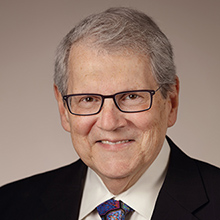
Dear Colleagues:
Public health advances, and the findings on which these improvements are based, require collaboration. These interactions vary in formality. Most occur spontaneously while investigators engage in their daily activities. Likewise at NIH, NIAMS staff are constantly sharing ideas with colleagues across the 27 Institutes and Centers to the benefit of the scientific community. When NIAMS co-funds a grant, participates in another Institute’s funding opportunity announcement, or co-sponsors a workshop, the genesis of our involvement can often be linked to one or more of these informal interactions.
Several NIH-led groups also provide venues through which we can address emerging scientific needs. These working groups and committees offer forums where we can present ideas, hear what others are doing and identify opportunities to leverage resources. Moreover, the groups provide access to a large network of experts with whom we can engage, thereby ensuring that our activities reflect input from a broader community than they would otherwise.
When some of our National Arthritis and Musculoskeletal and Skin Diseases Advisory Council members suggested that we identify understudied issues surrounding the appropriate use of drugs to prevent osteoporotic fractures, we knew this would be of interest to the Federal Working Group on Bone Diseases. Working group participants from many Institutes and Centers contributed to a proposal that NIAMS and the National Institute on Aging submitted to the NIH Office of Disease Prevention (ODP) Pathways to Prevention (P2P) program late last year. Now, these same staff are developing an agenda and identifying speakers for an ODP-sponsored workshop that will cover research questions about the benefits and risks of approved osteoporosis medications, considerations for stopping treatment, and how and when to monitor patients during or after therapy.
Likewise, the NIH Pain Consortium endorsed a proposal that the NIH convene a Chronic Low-Back Pain Research Task Force. The Consortium assembled a Steering Committee from participating Institutes and Centers to develop the Task Force’s goals and recruit investigators and health care providers with a wide variety of research and clinical backgrounds to serve on the panel. Published research standards that arose from this effort appeared in several journals due to their broad relevance to multiple communities. Widespread adoption of these standards should advance our understanding of chronic low-back pain’s causes and treatments, help to resolve controversies regarding interpretation and implementation of research results, and facilitate future studies addressing this debilitating condition.
When the NIH began planning the Environmental influences on Child Health Outcomes (ECHO) program, staff who were involved in the Patient-Reported Outcomes Measurement Information System (PROMIS) Working Group were well-positioned to make a case for incorporating patient-reported outcomes into studies of childhood diseases. This led to the Validation of Pediatric Patient-Reported Outcomes in Chronic Diseases (PEPR) Consortium, which is advancing the use of PROMIS measures for children who have conditions including atopic dermatitis (eczema), juvenile idiopathic arthritis and lupus.
Working groups and committees also provide venues for establishing research agendas on topics that transcend a single Institute’s mission. The Lupus Federal Working Group’s role in developing the latest Action Plan for Lupus Research and the Muscular Dystrophy Coordinating Committee’s 2015 Action Plan for the Muscular Dystrophies are two such examples. Moreover, such groups can serve as focal points for engaging additional organizations that have similar interests. Recognizing that the range of goals and research objectives in the 2015 Action Plan for the Muscular Dystrophies extends well beyond the mission of the NIH, the Muscular Dystrophy Coordinating Committee began interacting more regularly with a broader cross section of the muscular dystrophy community. This will allow the Committee to better assess how priorities are being addressed and to identify additional opportunities for collaboration.
These are but a few of the many trans-NIH and interagency groups that focus on diseases, organ systems or research tools. While their missions and structures may differ, each provides access to a network of people with a common interest. In addition to providing forums where we can share information and coordinate efforts, they offer pools of knowledge that we can quickly leverage when faced with scientific opportunities that would benefit from a broader perspective or could address the needs of multiple communities.
Stephen I. Katz, M.D., Ph.D.
Director
National Institute of Arthritis and Musculoskeletal and Skin Diseases
National Institutes of Health
